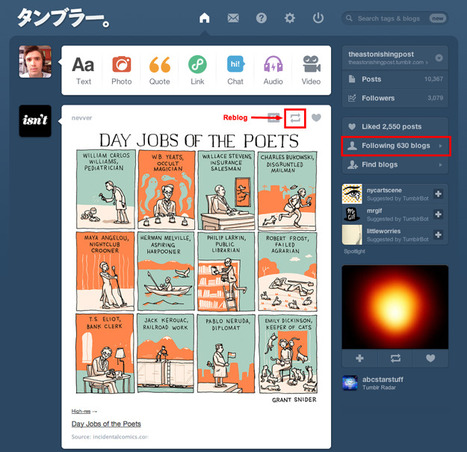

|
Scooped by Robin Good |
Newsletter Curation: Top 6 Tools and Tips To Curate Your Own Weekly Newsletter

Given the amount of news, stories, tools, events and services that are being announced on a daily basis it is very difficult for anyone to resist the time-saving benefits of subscribing to a newsletter that finds and collects the most relevant items in the specific topic area he is interested into.
If you are a subject-matter expert, a coach, trainer or consultant, you need to monitor and track your field of interest anyhow, and if you learn to put aside, organise and properly collect the good gems you find during your scouting time, you can provide a really useful service to your readers and followers.
Furthermore there is no lack of tools web services that can help you carry out this task without needing to learn new or difficult skills.
Here are my personal six tips of advice and my favorite top six tools you need to check out, if you ever decide to start curating your own weekly newsletter:
Tips
a. Limit the number of curated items. Less is more. Three is plenty. Five is a lot.
b. Provide concise but useful, tangible info.
c. Offer always as much context as possible. Why you are presenting this info. Who can use it, for what purpose.
d. Find a thread and follow it. Have a strong focus. Don't mix too many different things without a clear focus or direction.
e. Add your own voice. Make it heard. Comment. Express opinions. Take a stand.
f. Be timely and consistent. Choose a day and time and respect it.
Tools
1. FlashIssue
Perfect Gmail integration. Use existing contacts as mailing lists. Drag 'n drop design editor. Content discovery, and search and instant import. Free trial. Then starts at $10/mo for 500 contacts.
2. Goodbits
Friendly, elegant and simple to use. Integrates well with other services. Free to start.
3. Handpick
Handpick your favorite resources and share them with specific groups of interested people. Free trial. $2.99/mo
4. Curated
Everything you need to start a curated newsletter. Starts at $25/mo for 500 subs and 6 newsletters
5. Refreshbox
Allows you to pick up 5 tools or content resources per issue. Free.
6. Curator
Collaborative curation for professional teams of up to 25 people. Starts at $199/mo
For more content curation tools please see: https://contentcuration.zeef.com/robin.good
Image credit: Flashissue.com



 Your new post is loading...
Your new post is loading...
































Newsletter marketing is a ploy that is being successfully used by many industry tools and these tools can help you setup your newsletter.
Might make a good project for students; create your own newsletter.
170